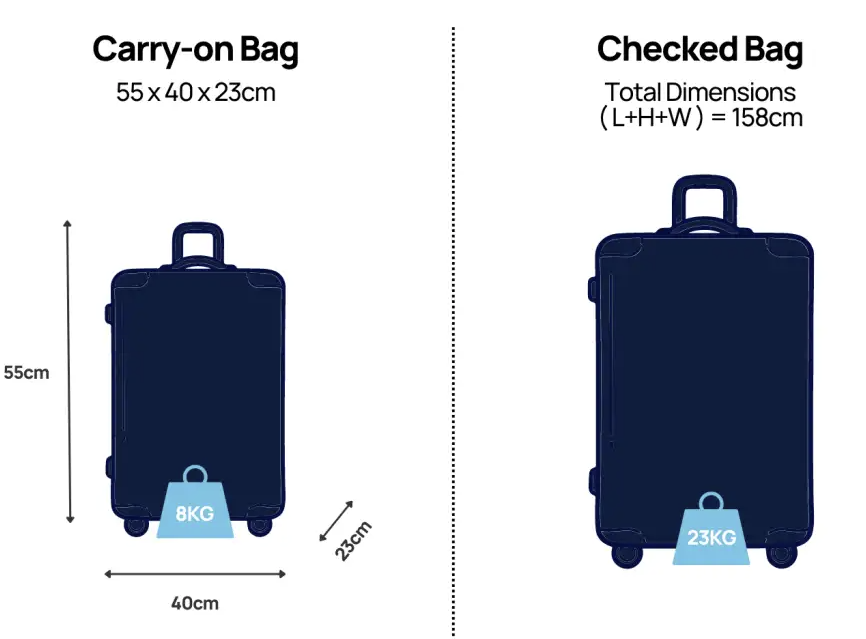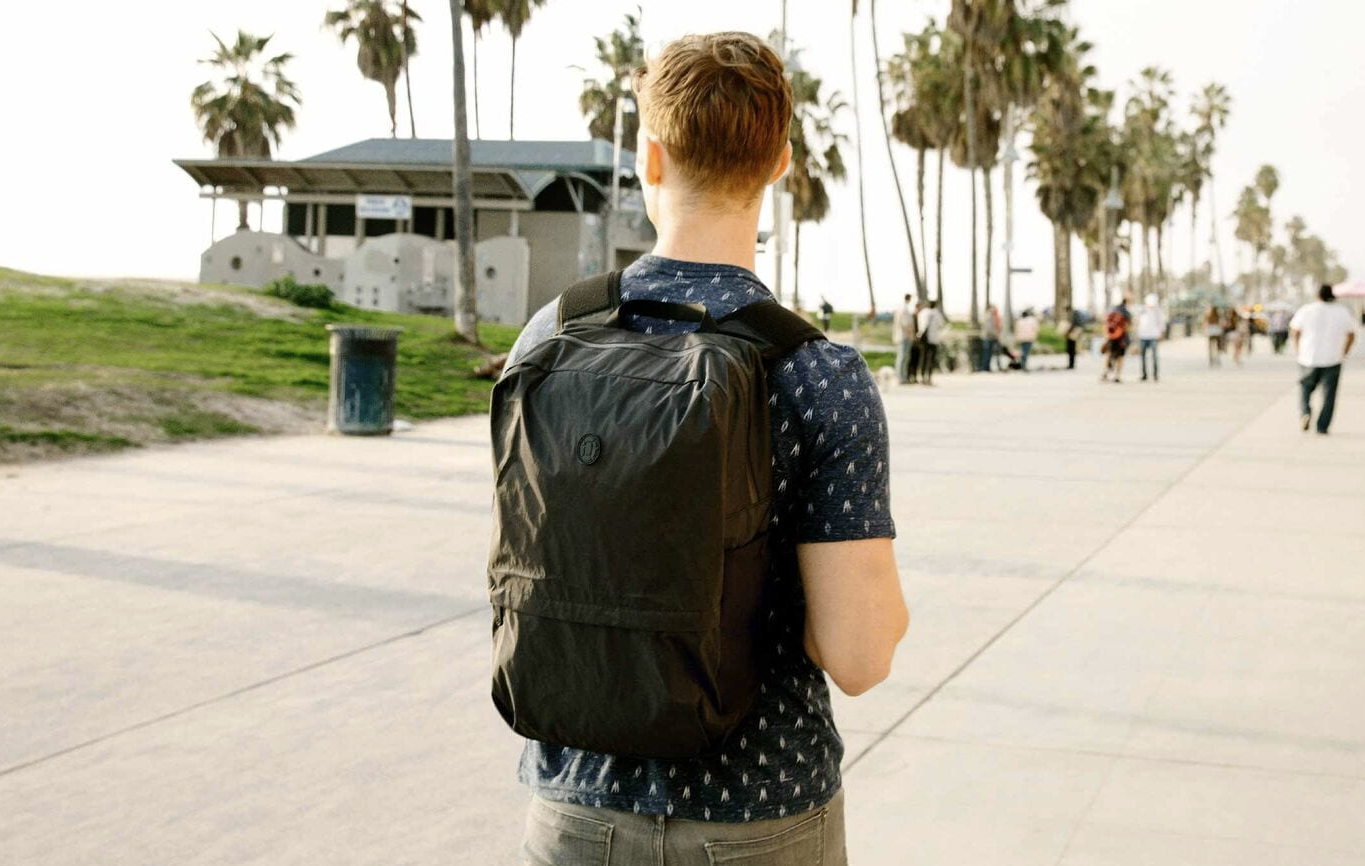Do backpacks count as personal items when it comes to air travel? This is a question that many travelers grapple with, especially in the era of increasingly stringent airline luggage policies. This guide will provide a thorough analysis of this issue, giving you the details required.
We’ll explore baggage allowances for both domestic airlines like Southwest, Delta, American Airlines, United and international ones from British Airways to Virgin. We’ll also delve into the typical size limit for personal item backpacks and discuss airport facilities provided for measuring hand-carry luggage.
Furthermore, we offer smart packing tips when using your backpack as a personal item. We give insights on how dividing belongings between different types of luggage helps avoid extra charges and how traveling light with essentials in a medium-sized laptop bag can make your journey smoother.
To ensure efficient use of space in your backpack considered as a personal item, we provide separate pouch usage tips along with advice on pre-downloading entertainment options and packaging food efficiently. Lastly but importantly, understand what constitutes “hand-luggage,” “checked-baggage,” and “personal-items” across various airlines.
Understanding Airline Luggage Policies
Don’t let airline luggage policies weigh you down. Doing your homework is key prior to packing for a trip, as every airline has distinct regulations.
The below image shows typical airline luggage policies – where carry-on’s are usually limited to around 55x40x23 – although some airlines vary slightly either larger or smaller.

Domestic Airlines: Southwest, Delta, American Airlines, United
For domestic flights, popular carriers like Southwest, Delta, American Airlines, and United all have different baggage policies. Here’s a quick breakdown:
- Southwest: Two free checked bags plus one cabin bag and a smaller personal item.
- Delta: One free cabin bag plus a smaller personal item.
- American Airlines: One free cabin bag plus another small personal item.
- United: One free full-sized carry-on bag plus one small item for Economy tickets.
International Airlines: British Airways, Virgin Atlantic
International flights have their own set of rules too. Here are a couple of examples:
- British Airways: One handbag/laptop bag plus an additional cabin bag with specific size and weight restrictions.
- Virgin Atlantic: One piece of luggage with specific size and weight restrictions, varying by class booked.
Remember to always check the airline’s website for specific details and fees. Happy travels.
The Size Limit for Personal Backpacks When Flying
Don’t let your backpack hold you back. Knowing the size limit for personal items like backpacks is key to a smooth travel experience. While airlines don’t have a universal standard, most allow dimensions between 16″ x 13″ x 7″ up to 18″ x 14″ x 8″. So, pack smart and pack light with your Tortuga Laptop Backpack.
What Size Backpacks Are Considered Personal Items?
Personal items are bags that fit under the seat in front of you. These include purses, briefcases, laptop bags, and small backpacks. Most airlines have guidelines that allow personal items with dimensions between 16″ x 13″ x 7″ and 18″ x 14″ x 8″, suitable for fitting under the seat in front of you. Delta, for example, doesn’t provide explicit measurements but states that personal items should fit under the seat in front of you.
How to Measure Your Backpack at the Airport
Airports often provide metal sizers near check-in counters or security checkpoints to ensure passengers comply with luggage policies. If your backpack doesn’t fit comfortably within the sizer, it’s probably too large to be considered a personal item. Consider a backpack designed specifically for air travel, like those found at REI Co-op.
Pack smart and save space. Careful planning and practicality are key to comfortable travels. Remember, every little bit counts, especially when fitting everything into one medium-sized Tortuga Laptop Backpack. Happy travels.
Smart Packing Tips for Using Backpacks as Personal Items
Packing for a trip can be a challenge, but with careful planning and strategic packing, you can make the most of your personal item allowance. Here are some smart packing tips:
Divide Your Belongings Between Different Types of Luggage
Checked luggage is ideal for larger items like clothing and shoes, while carry-on bags are perfect for essentials like medications, travel documents, electronics, and snacks. Your personal item backpack can hold smaller yet important things like a laptop bag or camera bag. Be mindful of weight distribution among your checked luggage, carry-on baggage, and personal items to avoid overweight fees.
Travel Light with a Medium-Sized Laptop Backpack
If you prefer to travel light, consider using a versatile laptop backpack that can double as a small backpack fitting under airplane seats. Make sure your laptop fits comfortably inside the main compartment without causing bulges. Bring a book or e-reader for long layovers and pack a separate toiletries kit to prevent leaks and spills.
- Laptop: Look for a backpack specifically designed for laptops to ensure a comfortable fit.
- E-reader/Book: A good book or e-reader is perfect for killing time during long layovers.
- Toiletries Kit: Bring mini versions of essential hygiene products to prevent unexpected overnight stays from becoming a hassle.
Remember to check your airline’s rules regarding carry-ons and personal items. Some airlines allow only one piece of carry-on luggage plus another smaller object, while others permit two pieces.
Mastering the art of effective utilization of available space within your chosen carrying equipment ensures stress-free journeys, regardless of the destination. Remind yourself of these tips for a hassle-free trip the next time you go on an exciting excursion.
This section provides smart packing tips for using backpacks as personal items when traveling. It suggests dividing belongings between different types of luggage, such as checked luggage and carry-on bags, to avoid overweight fees. Additionally, it recommends using a medium-sized laptop backpack that can double as a small backpack fitting under airplane seats and checking the airline’s rules regarding carry-ons and personal items before packing.
Efficient Use of Space in Your Backpack
Maximizing backpack space is all about smart packing. Categorize your items and store them strategically in different compartments. From toiletries to entertainment, food, and clothing, every item has its place.
Usage Tips for Separate Pouches
Keep things organized by using separate pouches for smaller items like toiletries or makeup. Packing organizers help you quickly locate what you need without rummaging through everything. They also prevent spills from ruining other items.
Pre-Downloading Entertainment Options
Forget physical entertainment like books or magazines. Pre-download podcasts or movies onto devices beforehand. Websites like Netflix and Spotify offer downloadable content that can be accessed offline anywhere.
Efficient Food Packaging
Packing snacks doesn’t mean stuffing bags of chips into every available nook and cranny. Opt for healthier alternatives like nuts or dried fruits packed into reusable containers. Bring a refillable water bottle to reduce plastic waste and ensure hydration.
Rolling-up clothes rather than folding them flat results in more efficient use of space and reduces wrinkles. Try this technique next time you pack; you’ll have extra room for souvenirs.
Understanding Hand-Luggage, Checked-Baggage, and Personal-Items for Air Travel
Avoid surprises at the airport by familiarizing yourself with the differences between hand-luggage, checked-baggage, and personal items. Knowing the difference between hand-luggage, checked-baggage, and personal items can save you from unexpected fees and stress. Before travelling, confirm the airline’s regulations to avoid any unpleasant surprises.
Hand-Luggage
Hand-luggage, also known as carry-on baggage, is any item you can bring into the cabin with you. This usually includes small suitcases or backpacks that fit in overhead compartments or under seats. Check the TSA guidelines for acceptable dimensions.
Checked-Baggage
Checked-baggage refers to larger bags that are stored in the aircraft’s cargo area during flight. These items need to be checked-in before boarding and collected upon arrival at your destination. Airlines often have weight restrictions for checked baggage which vary by airline and ticket class.
Personal-Items
A “personal item” typically refers to smaller belongings like purses, laptop bags, or briefcases that can fit under an airplane seat without blocking aisle space significantly. Most North American major carriers don’t publish size requirements explicitly online, so direct inquiries may be necessary. For instance, Delta Air Lines’ website suggests contacting their customer service directly if unsure about whether a bag qualifies as a personal item.
Remember, every inch counts when traveling light. Pack efficiently by understanding these distinctions clearly and avoid unnecessary costs potentially incurred due to extra pieces brought onboard unknowingly.
Backup Copies of Important Documents and Lightweight Outfits
Don’t let lost passports or cramped suitcases ruin your travels. Be prepared with backup copies of essential documents and smart packing techniques.
Essential Documents Needed During Travel
Always carry a backup copy of your passport and other vital IDs. Digital versions stored securely on cloud storage platforms like Dropbox or Google Drive work just as well. Don’t forget to save PDFs of flight tickets, hotel bookings, and emergency contacts too.
Packing Lightweight Outfits
Optimize limited space onboard by packing mix-and-match clothing in lightweight, durable fabrics like nylon and polyester blends. Roll your clothes tightly into cylinders to save space and maximize your personal item allowance offered by airlines. Check out Business Insider’s guide for step-by-step instructions on rolling clothes.
With backup copies of important documents and smart packing techniques, you can focus on exploring new destinations without worrying about the small stuff.
FAQs in Relation to Do Backpacks Count as Personal Items
Are Backpacks Considered Personal Items?
Yes, most airlines consider backpacks as personal items if they fit under the seat in front of you.
Does My Backpack Count as a Carry-On?
Typically, your backpack will count as a carry-on only if it meets specific size requirements set by the airline.
What Size Backpack is a Personal Item?
The standard dimensions for a personal-item sized backpack are 18 x 14 x 8 inches.
Does a Backpack Count as a Personal Item on Spirit Airlines?
Yes, Spirit Airlines allows one small backpack as your free personal item, provided it fits under the seat.
Conclusion
Backpacks: Personal Item or Carry-On? Don’t get caught with extra fees at the airport – know the size limits for personal items on your airline and pack smartly to make the most of your space.
Separate pouches, downloaded entertainment, and efficient food packaging can all help you pack like a pro. And don’t forget to double-check what counts as a personal item versus carry-on or checked baggage.
Finally, keep important documents backed up and pack lightweight outfits to make your travels stress-free.


